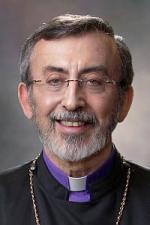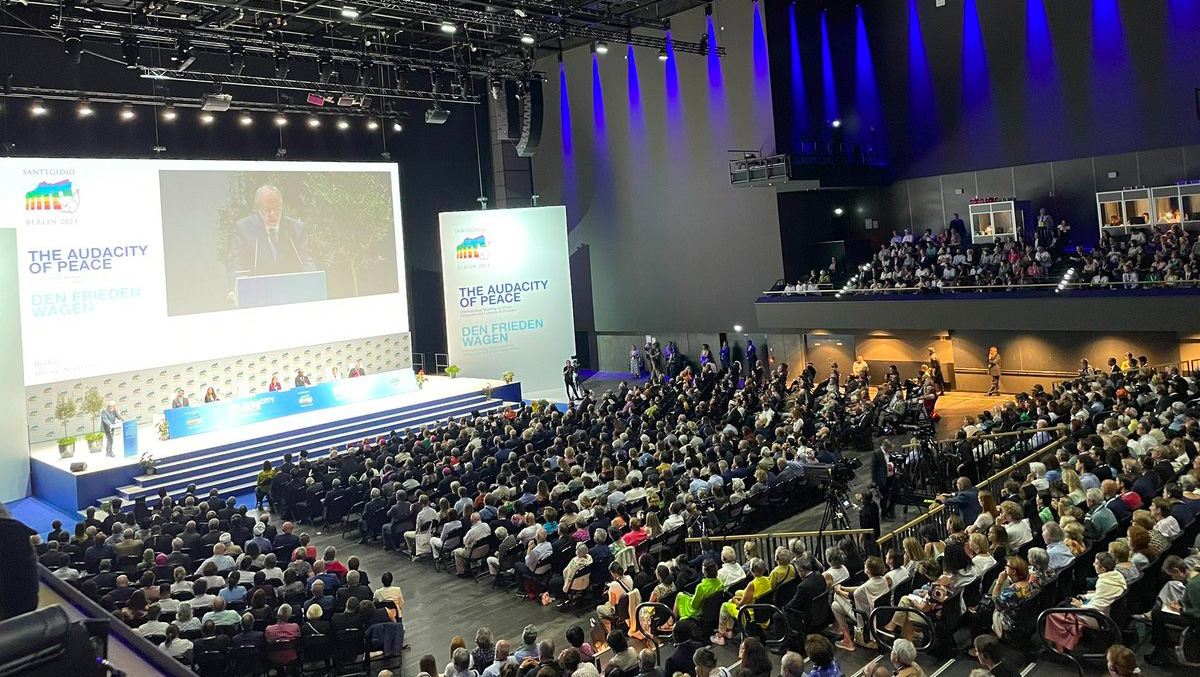
First, I would like to express my appreciation to the Community of Sant’Egidio for organizing once again this International Meeting for Peace. And I am happy to be part of this Forum in which we are discussing a very important topic “The Cry for Peace – the Voice of the Martyrs”.
If you allow me, as a bishop in the Armenian Church, I will share with you my thoughts from the cumulative history of the Armenian people.
In the historic churches, like the Armenian Church, we have daily readings for the whole year on the lives of the Saints. In this massive book we call the Menelogion (Haysmawurk‘), every page is a martyrology. We thus grow up being daily reminded of the martyrs of the Early Church, and you no doubt have heard the saying: “the blood of the martyrs is the seed of the Church” (Tertullian, Apologeticus, L. 13.
As the first nation to embrace Christianity (in 301), Armenia is also the first nation to go to war for its preservation (in 451), when the Persian Sassanians invaded Armenia to win Armenians back to their former Zoroastrian religion. The ensuing Battle of Avarayr, known as “The History of Vardan and the Armenian War,” is memorialized by two historians of the 5th century: Ghazar, giving a factual account, and Yeghishē, giving a moralized interpretation of the battle and elaborating on the meaning of martyrdom. Though the outnumbered Armenians lost the battle, they managed to maintain their newfound religion. This, in effect, became the blueprint of subsequent Armenian history, a history of lost wars and martyrdom, and yet survival in the face of basically religious hostility—which manifests itself in ethnic conflicts, more so when surrounded by hostile neighbors.
I find it necessary to refer to the century-old history of the Armenian Genocide, during which 1.5 million Armenians perished. They would have saved their lives had they denounced their faith and embraced that of their oppressors. In a word, they died as martyrs. Consequently, in 2015, as Armenians and others commemorated the centennial of the Genocide, the Armenian Church canonized the martyrs of the 1915 Genocide as saints.
Genocide for us is not a thing of the past, it continues from the turn of the 20th century into the 21st. Needless to say, the Armenian Genocide has become the textbook for all Genocide studies since then. Thus, as a people, we feel strongly the pain and suffering of all people who have experienced this evil in the world, as well as the pain of those who have suffered—indeed martyred—in the fight for their religious and civil rights.
The vulnerability of our people to renewed Genocide became evident in late February 1988, in what is known as the Sumgait pogrom that targeted the Armenian population of the Caspian town of Sumgait (near Azerbaijan’s capital Baku). The pogrom took place during the early stages of the Karabakh movement, when Armenians of Artsakh (as Armenians refer to the region also known as Nagorno Karabakh) reclaimed their ancestral lands and declared their independence from Azerbaijan—only to loose it again in the aftermath of the recent “Second Nagorno-Karabakh War”. Today, as we are gathered here, the 120,000 Armenians of Artsakh are being starved to death by their Azeri oppressors.
A former International Criminal Court Prosecutor, Luis Moreno Ocampo, has recently issued an alarming report, “Genocide against Armenians in 2023,” in which he warns that the 120,000 ethnic Armenians living in Artsakh are facing the prospect of genocide by starvation at the hands of Azerbaijan. Ocampo, a leading legal expert from Argentina and the first ICC (International Criminal Court) Prosecutor from 2003 to 2012, is calling on the United Nations Security Council to refer the matter to the International Criminal Court.
We all know of various peace treaties signed between leaders of fighting/waring countries. More often than not, these treaties are limited to ending, stopping of wars, leaving much to be desired when it comes to reconciling peoples who continue to live as enemies.
We recall the late Archbishop Desmond Tutu’s “Truth and Reconciliation Commission”. He sought to apply the principle of restorative justice, in contrast to “retributive justice” that he believed would not achieve lasting peace in a post-Apartheid South Africa. Inspired by Christian moral teaching, he used his platform as a religious leader to fight for social justice by advocating reconciliation and forgiveness. He is and remains an exemplar of faith-based peacebuilding in our times. I underline the words “faith-based”, since it is an endeavor that emanates from the teaching of Jesus. As the Archbishop Tutu once made the following remarks: “For our nation to heal and become a more humane place, we had to embrace our enemies as well as our friends. The same is true the world over. True enduring peace — between countries, within a country, within a community, within a family — requires real reconciliation between former enemies and even between loved ones who have struggled with one another.”
Much as we seek peace through advocacy groups, it is mandatory upon the aggressor to be open and receptive/responsive to peace. The burden for peace is harder to carry by the desperately oppressed, the martyr alone.
Finally, this year the Armenian Church commemorates the 850th anniversary of the death of St. Nersēs Shnorhali, hierarch of the Armenian Church who strived for peace and reconciliation among the Eastern and Western churches, thus becoming a progenitor of ecumenism and religious tolerance. By his own admission, he was moved by Christ’s saying in the Beatitudes: “Blessed are the peacemakers, for they will be called children of God.” And so we endeavor to keep this blessed legacy for our times.
